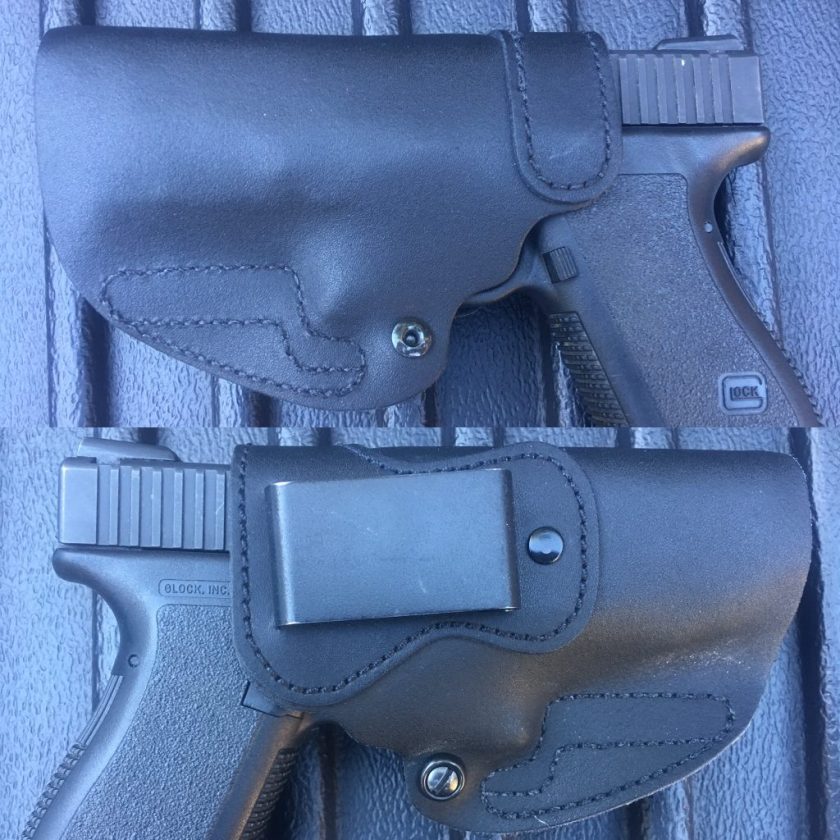A few years ago, I was looking for a holster for my Glock 19 as a temporary setup to hold me over until my custom kydex order showed up. Several of my trusted friends recommended the Mister Softy from High Noon Holsters. Even after receiving my high-speed kydex stuff, I’ve found myself going back to it again and again. Here’s a brief review.

Things of note:
Price – At $30, it’s a really good value. It is also in stock and ready to ship. Mine has held up really well. I’ve got my money’s worth. The price point means that if I have a friend who is carrying in an Uncle Mike’s nylon job, I wouldn’t feel bad giving them this one as a solid upgrade from nylon.

Multiple Gun Fit – It fits all of the G19 sized guns I own. I have successfully carried the Glock (26,19,17), the Beretta PX4 Compact, and now the Sig P250. The pliability of the cowhide allows slightly different guns to fit the same holster. I usually would poo-poo a ‘universal holster’, but this one does a good job of doing what a holster needs to do, while accommodating several guns. It’s like a quality gun sock. That’s a win.

Belt Clip – The stout spring clip snaps over belts with ease, and stays put. I have used this in force on force and in a lot of range trips and competitions. Never a hiccup. It DOES require a belt though.

Concealment – This is a good carry holster, but not a great training or competition holster. It’s a basic holster with no wedges or claws to tuck the grip into your waist, but still does a fine job. You can see where the top of the clip meets the grip/trigger guard that the holster rides low in the pants. This is great for concealment, but requires you to tilt the holster as your fingers slide into position to establish a full firing grip before drawing. Retention is provided via friction by the rough side of the leather. I carry this at 1 O’clock. It is a straight drop holster.
Construction – The small gripe I have with the construction is that the mouth of the holster is not reinforced besides a second layer of cowhide. I’d love if it were steel or kydex reinforced, but that adds to price significantly. While it’s new, you can still holster the gun easily. The lack of reinforcement means the mouth of the holster closes a bit once you draw. The more sweaty and worn it gets, the worse this issue will get. This is why I say it’s not a great training or competition holster. For daily carry, it’s perfectly serviceable.

That’s pretty much it. It’s a holster that I have no problem recommending for an off-the-shelf option.
Thanks for reading,
Mark
If you find value in my posts, please consider subscribing and sharing. And please do your Amazon shopping through our affiliate link.









